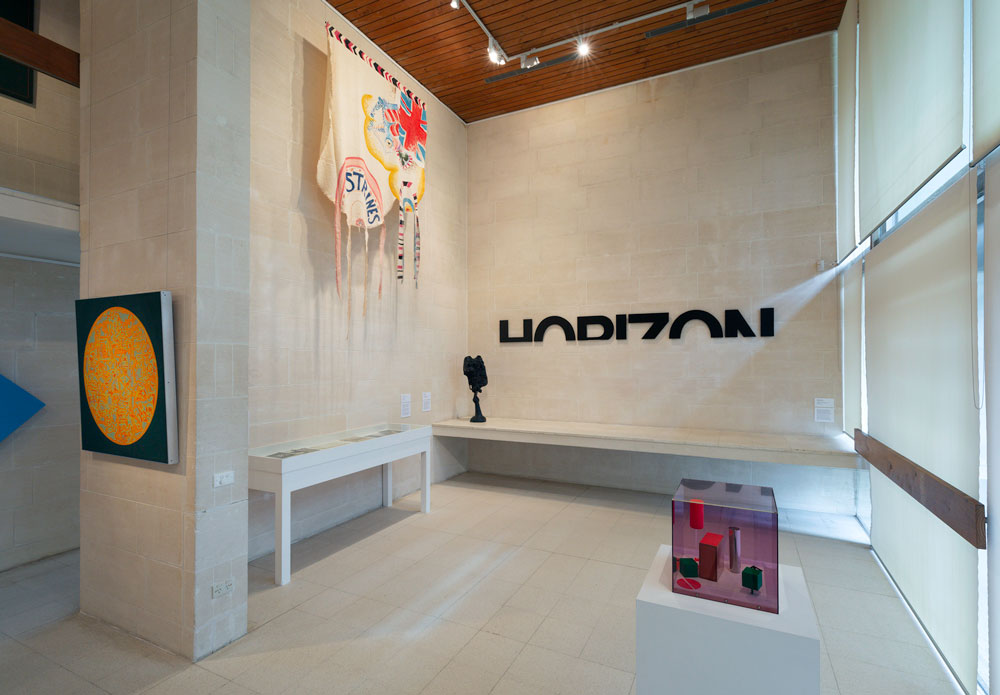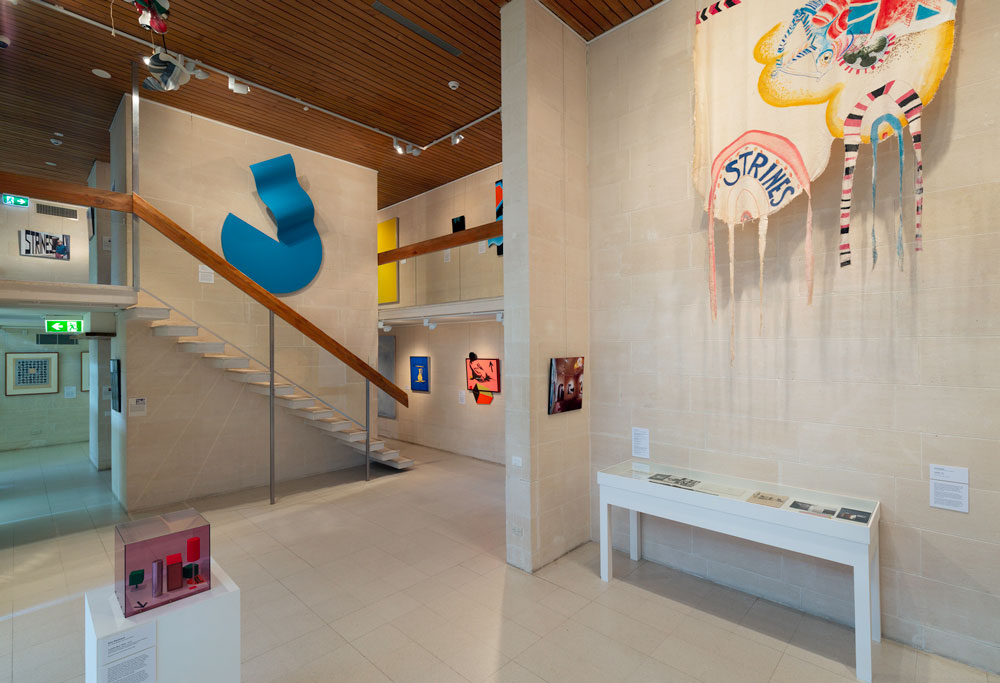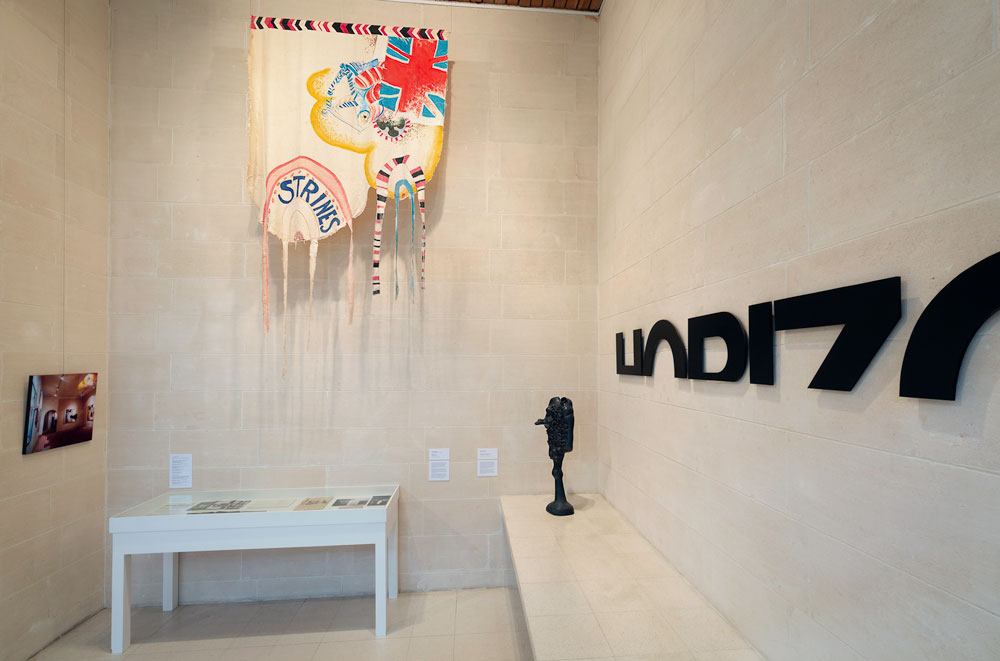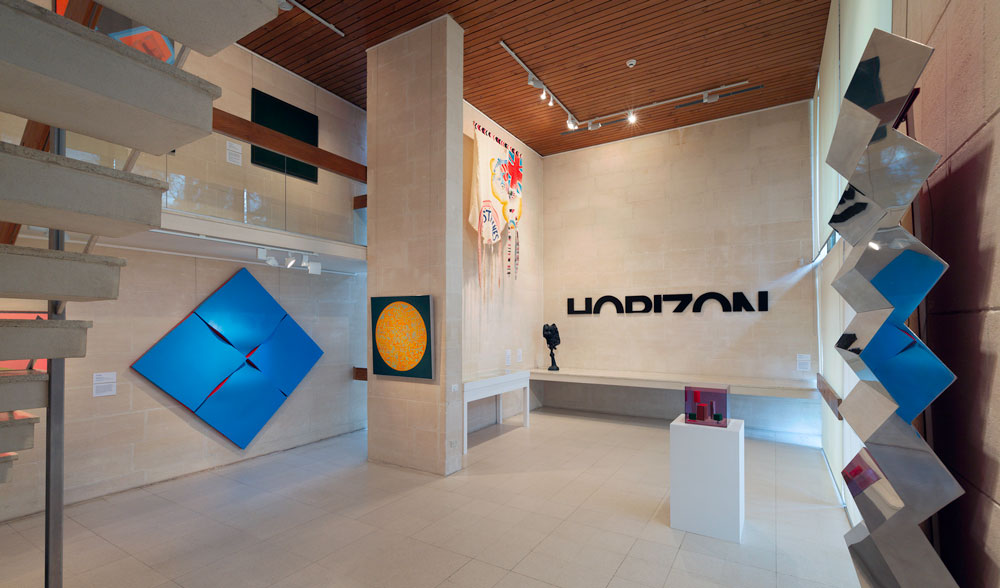ART-PRESENTATION: Sweeney Reed and Strines Gallery
 At age 21, Sweeney Reed (the adopted son of Heide Museum’s Founders John and Sunday Reed) opened Strines in Carlton (1966-70), and six years later launched Sweeney Reed Galleries in Fitzroy (1972-75). Both galleries promoted a new wave of daring abstractionists now considered significant figures in the history of Australian art.
At age 21, Sweeney Reed (the adopted son of Heide Museum’s Founders John and Sunday Reed) opened Strines in Carlton (1966-70), and six years later launched Sweeney Reed Galleries in Fitzroy (1972-75). Both galleries promoted a new wave of daring abstractionists now considered significant figures in the history of Australian art.
By Dimitris Lempesis
Photo: Heide Museum of Modern Art Archive
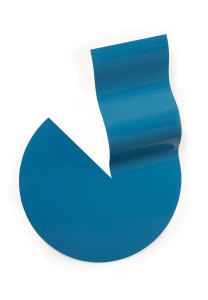
The exhibition “Sweeney Reed and Strines Gallery” focuses on the relatively brief in which these galleries were operational, drawing works from Heide’s Collection and further afield. The exhibition also celebrates Sweeney Reed’s own work as an artist, concrete poet and small press publisher, and considers the role of female artists during a time when they were under-acknowledged, including Lesley Dumbrell, Sandra Leveson, Margaret Worth and Bridget Riley. Sweeney Reed was born in Melbourne, son of the artists Albert Tucker and Joy Hester, closely associated with the art patrons John and Sunday Reed at Heide Museum in the environs of Melbourne. Tucker named his son Sweeney after the persona in T.S. Eliot’s modernist poems, notably “Sweeney Among the Nightingales”. After his parents separated, with Hester leaving for the painter Gray Smith in 1947 and Tucker for Europe the same year, their son was placed under the sole guardianship of the Reeds in 1948 who formally adopted him two years later. Sweeney Reed grew up in the artistic and literary milieu of Heide where he was tutored at home and then put to board at Geelong Grammar but became increasingly troubled during adolescence. In 1962 his first book of poems, “The Savage Urge”, with cover drawings by Mirka Mora, was published by John and Sunday Reed. In October 1966, Sweeney Reed launched his first commercial gallery venture, Strines, with an exhibition of brush and ink drawings and collages by the young artist Ron Upton. For its allusions to the human anatomy, including genitalia and sexual innuendo, the exhibition drew the ire of the Victorian Police Vice Squad and provoked criminal charges on the grounds of obscenity. The subsequent ordeal threw the progressive aspirations of Reed’s fledgling gallery into relief against a broader social context of moral conservatism. In the year Strines opened, Gallery A run by Max Hutchinson was the only commercial gallery in Melbourne showcasing innovative or experimental art in any dedicated capacity, with its mandate to promote then-contemporary non-objective work. Since the closure, earlier in 1966, of the Museum of Modern Art and Design of Australia, there had been a paucity of galleries focused on the promotion of advancements in artistic production. The late 1960s, however, saw maturation in this area. Strines’ 1966 opening was closely followed by Bruce Pollard’s influential Pinacotheca in St Kilda in 1967. Among the other new establishments launched in these years were Tolarno Galleries, directed by Georges Mora in St Kilda in 1967, and Powell Street Gallery in South Yarra in 1969. Over four years, he presented an innovative program of contemporary art at Strines that helped launch the careers of a new generation of artists. Trevor Vickers held his first solo exhibition at the gallery in 1966 and a second the following year. John Krzywokulski, who was still a student when Reed signed him to Strines’ books, mounted his debut solo show there in 1969. Les Kossatz staged his first three exhibitions at the gallery, presenting a successive series of motifs that charted the evolution of his practice from 1967–69 and Alex Selenitsch, in his inaugural exhibition in 1969, became the first artist to hold a solo show of concrete poetry in Australia at Strines. Alongside these artists, the gallery showcased the work of a group of young Colour Field and hard-edge abstractionists, Pop artists, and those working in styles less readily categorisable, many of whom are now regarded as key figures in Australian art history. Reed sold Strines and withdrew his involvement with the gallery in 1970. In 1972, he opened his second venture, Sweeney Reed Galleries, with Julian Sterling as silent partner and Peregrine Smith, Sweeney’s half-brother as gallery manager. As with Strines, Sweeney Reed Galleries attracted a like-minded and progressive circle of young artists around a loose program of exhibitions—, dding new artists to the roster, including Ken Reinhard, Patrick Caulfield (who exhibited for the first time in Australia in his solo exhibition at the gallery in 1972), Allan Mitelman and Gareth Sansom, who became Reed’s steadfast friend. Sweeney Reed Galleries remained operational for three years, until 1975. In parallel with his commercial gallery dealings at Strines and Sweeney Reed Galleries, from 1966, Reed initiated a series of progressive small press publishing ventures through which he distributed publications by international artists and poets such as Ian Hamilton Finlay and later designed and published the work of his contemporaries. These publications took the form of limited edition prints, poster poems, catalogues, journals, anthologies and books. Reed also regularly contributed to the poetry and visual art scenes by producing his own work for publication in progressive magazines and reviews. The “Broadsheet” poster series, initiated by activist and historian Ian Turner, is one such example that featured numerous artists involved with Strines. Turner and associate editors invited artists, poets and writers to respond to contemporary issues and the resultant posters contained letterpress and relief print poems in hand numbered short-run editions.
Info: Heide Museum of Modern Art, 7 Templestowe Rd, Bulleen, Duration: 25/8/18-24/2/19, Days & Hours: Tue-Sun 10:00-17:00, www.heide.com.au

